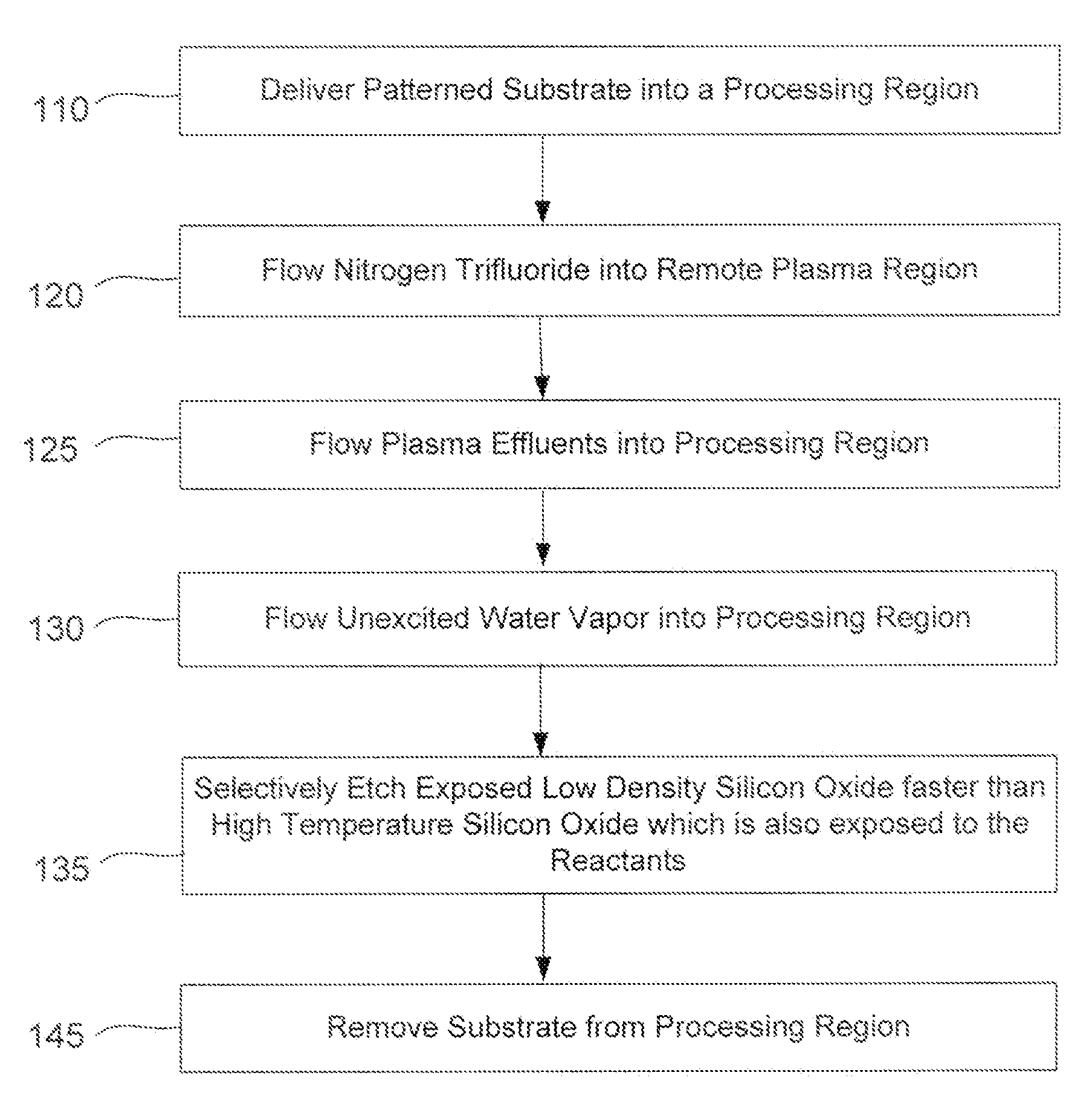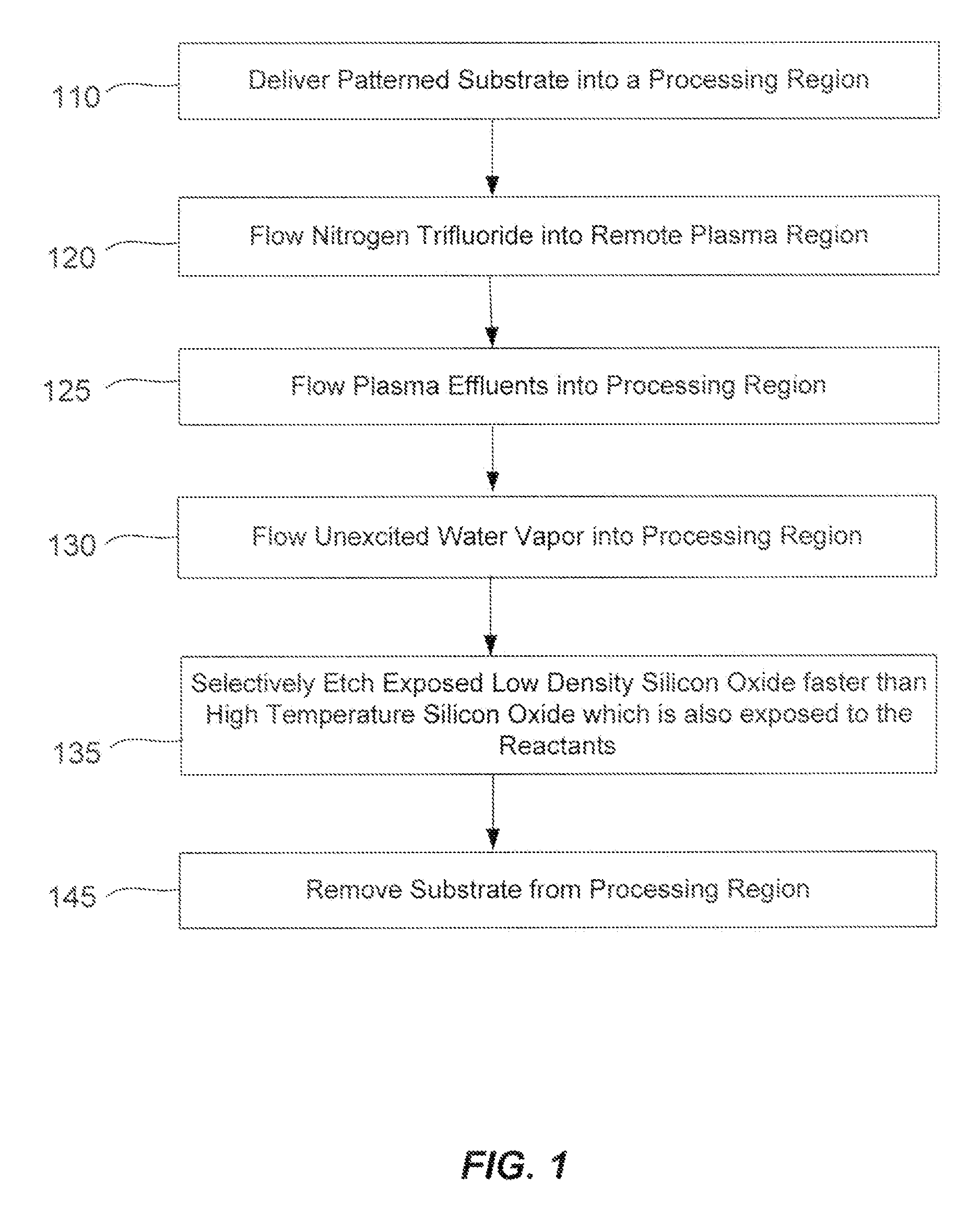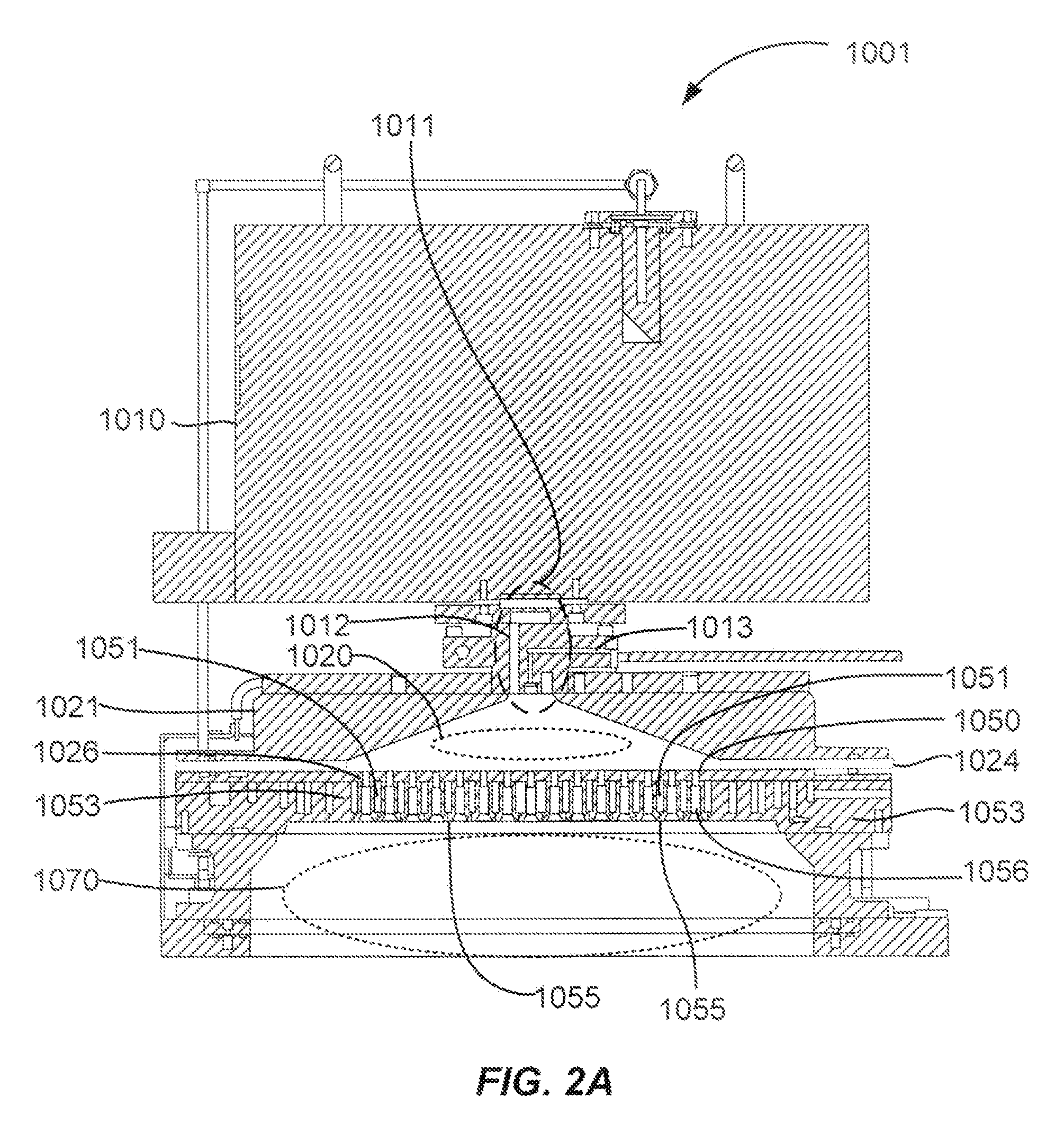Differential silicon oxide etch
a technology of silicon oxide and etching layer, applied in the direction of electrical discharge tubes, decorative arts, electrical apparatus, etc., can solve the problems of deformation of remaining materials, local plasma damage to substrates, wet processes cannot penetrate some constrained trenches, etc., and achieve the effect of less high density silicon and low density
- Summary
- Abstract
- Description
- Claims
- Application Information
AI Technical Summary
Benefits of technology
Problems solved by technology
Method used
Image
Examples
Embodiment Construction
[0015]A method of etching exposed silicon oxide on patterned heterogeneous structures is described and includes a gas phase etch created from a remote plasma etch. The remote plasma excites a fluorine-containing precursor. Plasma effluents from the remote plasma are flowed into a substrate processing region where the plasma effluents combine with water vapor. Reactants thereby produced etch the patterned heterogeneous structures to remove two separate regions of differing silicon oxide at different etch rates. The methods may be used to remove low density silicon oxide while removing less high density silicon oxide.
[0016]Selective remote gas phase etch processes have used a hydrogen source of ammonia (NH3) and a fluorine source of nitrogen trifluoride (NF3) which together flow through a remote plasma system (RPS) and into a reaction region. The flow rates of ammonia and nitrogen trifluoride are typically chosen such that the atomic flow rate of hydrogen is roughly twice that of fluo...
PUM
| Property | Measurement | Unit |
|---|---|---|
| temperature | aaaaa | aaaaa |
| temperature | aaaaa | aaaaa |
| temperature | aaaaa | aaaaa |
Abstract
Description
Claims
Application Information
 Login to View More
Login to View More - R&D
- Intellectual Property
- Life Sciences
- Materials
- Tech Scout
- Unparalleled Data Quality
- Higher Quality Content
- 60% Fewer Hallucinations
Browse by: Latest US Patents, China's latest patents, Technical Efficacy Thesaurus, Application Domain, Technology Topic, Popular Technical Reports.
© 2025 PatSnap. All rights reserved.Legal|Privacy policy|Modern Slavery Act Transparency Statement|Sitemap|About US| Contact US: help@patsnap.com



